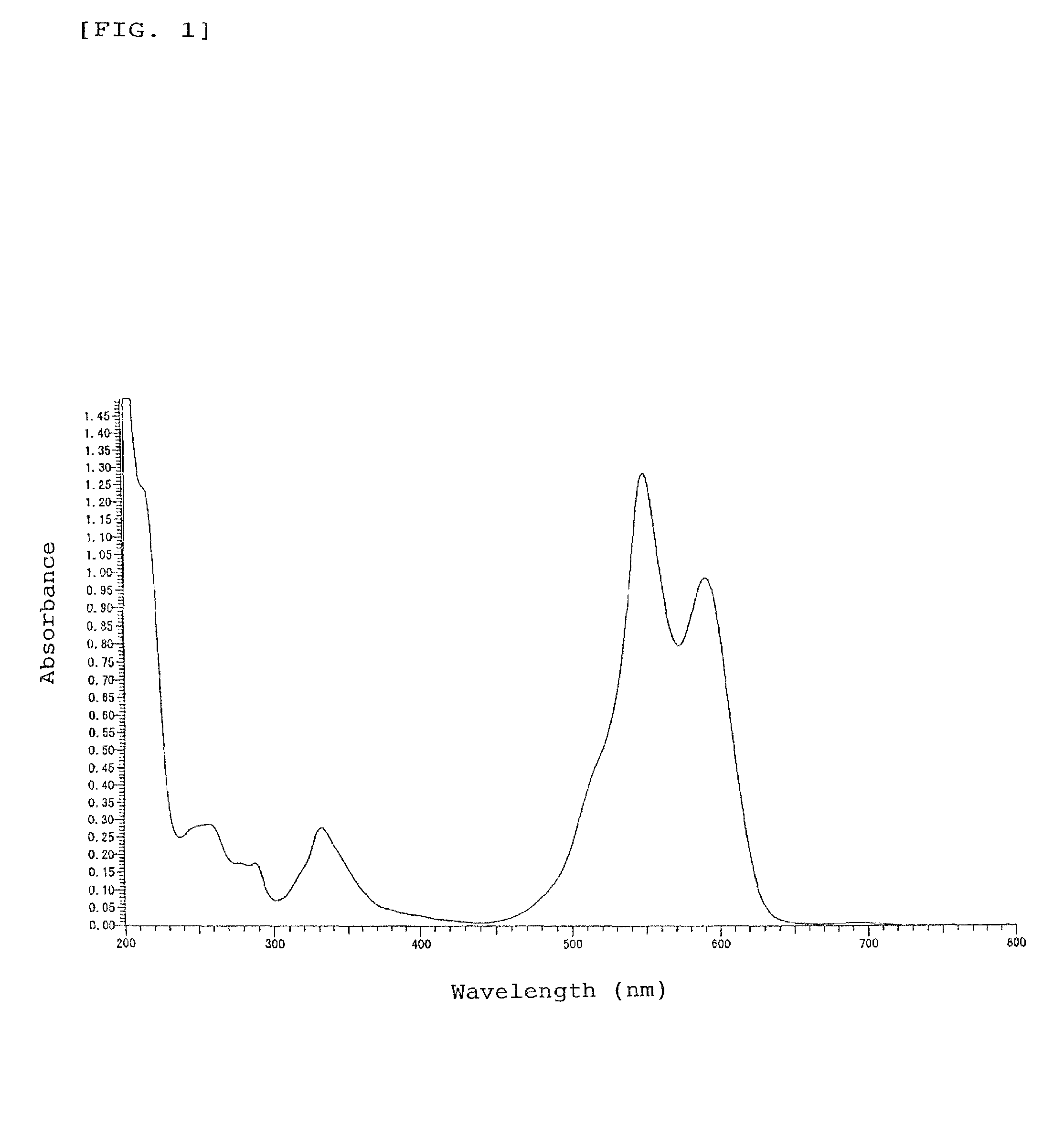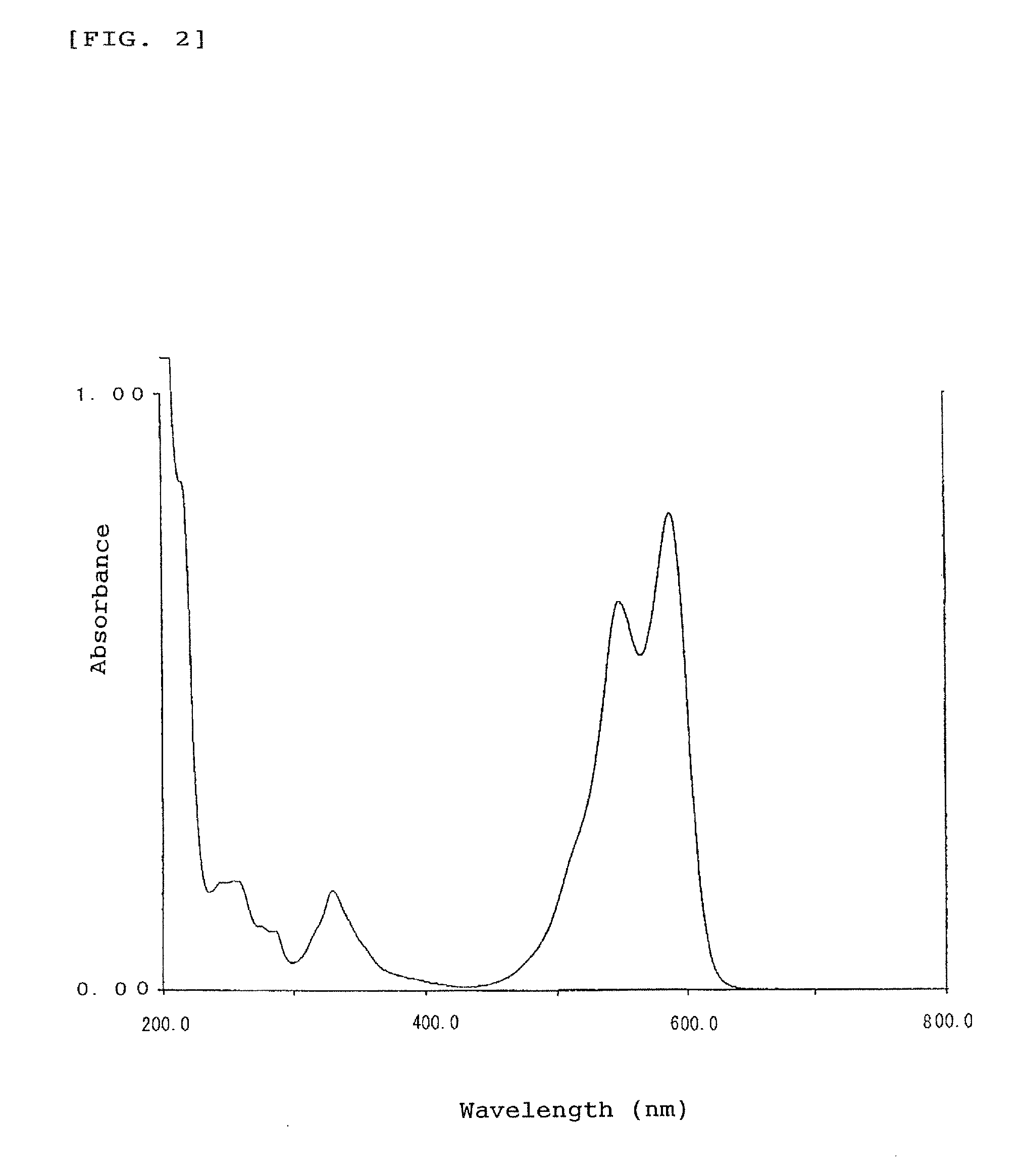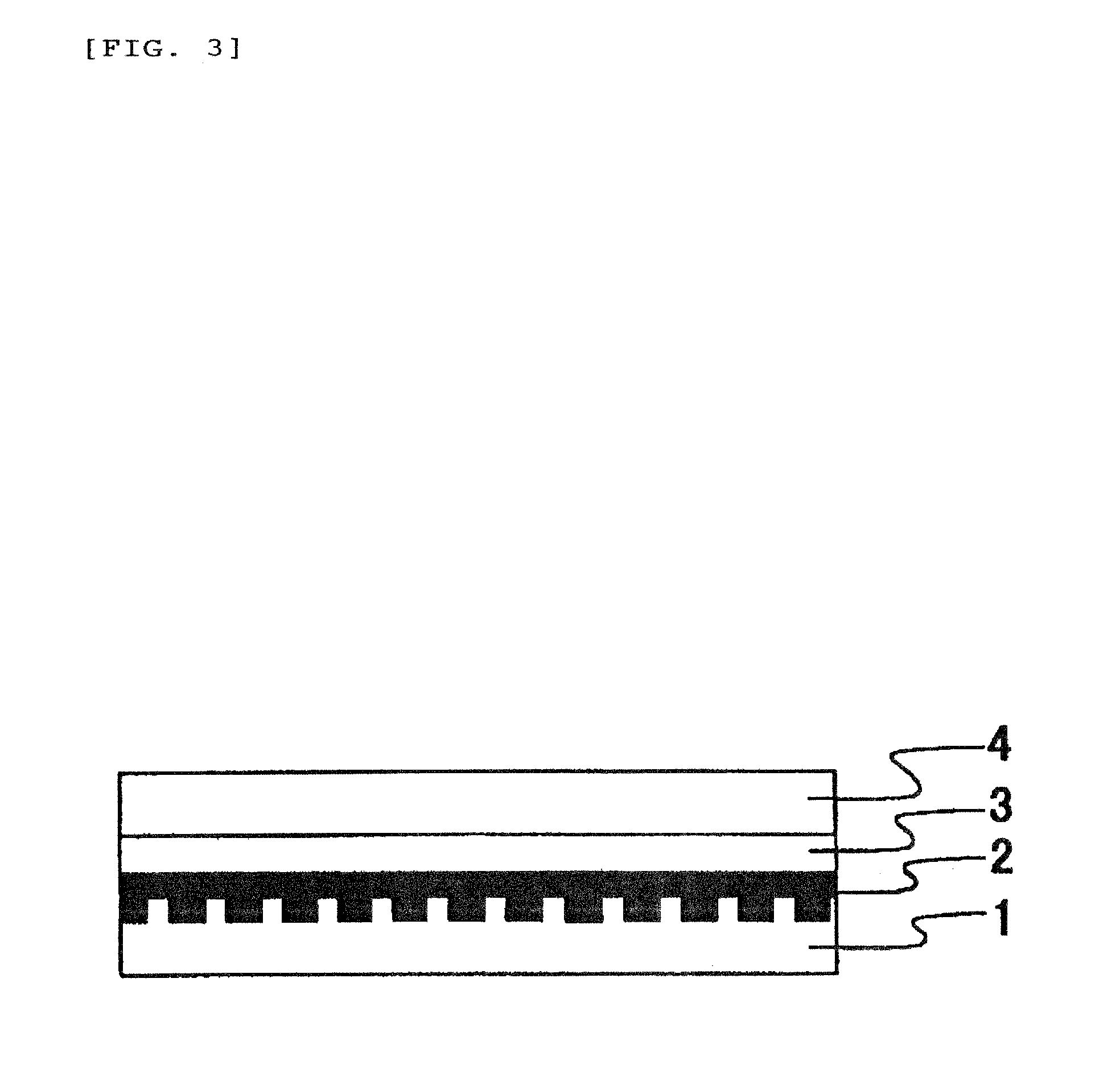Methine dyes and uses of the same
a technology of metalhine dyes and dyes, which is applied in the field of metalhine dyes, can solve the problems of inability to achieve sufficient sensitivity, increase jitters in the time direction of reproduction signals, and lower light stability (light tolerance), so as to improve light tolerance and solubility, and widen the applicability of organic compounds
- Summary
- Abstract
- Description
- Claims
- Application Information
AI Technical Summary
Benefits of technology
Problems solved by technology
Method used
Image
Examples
example 1
Indolenine Compound
[0100]Forty grams of the compound represented by Chemical Formula 54 and 76.6 g of the compound represented by Chemical Formula 55 were placed in a reaction container and allowed to react for one hour while stirring. The reaction mixture was cooled, admixed with 80 ml of concentrated hydrochloric acid, and allowed to react for 30 min while heating. The resulting reaction mixture was cooled, admixed with a 25% aqueous sodium hydroxide solution drop by drop, and further admixed with chloroform for extraction. The chloroform layer was collected by decantation, washed with water and saturated saline, dehydrated with anhydrous magnesium sulfate, filtered, and followed by removing chloroform. The oily extract thus obtained was purified on silicagel column chromatography using a mixture solution of chloroform and methanol as a developing solvent to obtain 29.8 g of a white, oily product of the indolenine compound represented by Chemical Formula 46 of the present inventio...
example 2
Indolenine Compound
[0104]Except for using the compound represented by Chemical Formula 56 in place of the compound represented by Chemical Formula 54, it was allowed to react similarly as in Example 1 to obtain 8.3 g of a white, oily product of the indolenine compound represented by Chemical Formula 51 of the present invention.
[0105]
[0106]A part of the oily product was sampled and measured for absorption spectrum in methanol solution as an absorption property in usual manner, revealing that the indolenine compound has absorption peaks (ε=8.35×103 to 5.81×104) in the ultra violet region with wavelengths of around 215 to 305 nm. 1H-NMR Analysis of the indolenine compound in chloroform-d solution gave a chemical shift δ (ppm, TMS) at peaks of 0.10 to 0.25 (2H, m, —CH2—), 0.30 to 0.45 (2H, m, —CH2—), 0.70 to 0.85 (4H, m, —CH2—), 1.43 (6H, s, CH3—), 1.74 to 1.84 (2H, m, —CH2—), 2.12 to 2.22 (2H, m, —CH2—), 2.20 (6H, s, CH3—), 7.38 to 7.51 (4H, m, ArH), and 7.70 to 7.92 (8H, m, ArH).
[0107...
example 3
Indolenine Compound
[0108]Except for using the compound represented by Chemical Formula 57 in place of the compound represented by Chemical Formula 54, it was allowed to react similarly as in Example 1 to obtain 12.8 g of a white, oily product of the indolenine compound represented by Chemical Formula 47 of the present invention.
[0109]
[0110]A part of the oily product was sampled and measured for absorption spectrum in methanol solution as an absorption property in usual manner, revealing that the indolenine compound has absorption peaks in the ultra violet region with wavelengths of around 216 to 350 nm. 1H-NMR Analysis of the indolenine compound in chloroform-d solution gave a chemical shift δ (ppm, TMS) at peaks of 1.52 (6H, s, CH3), 2.20 (6H, s, CH3), 3.00 (2H, d, CH2—), 3.38 (2H, d, CH2), 6.01 (4H, s, ArH), 7.25 to 7.56 (6H, m, ArH), 7.74 (2H, d, ArH), 7.91 (2H, d, ArH), and 7.98 (2H, d, ArH).
[0111]The indolenine compound is useful as an intermediate to prepare the methine dyes w...
PUM
| Property | Measurement | Unit |
|---|---|---|
| wavelengths | aaaaa | aaaaa |
| wavelengths | aaaaa | aaaaa |
| wavelengths | aaaaa | aaaaa |
Abstract
Description
Claims
Application Information
 Login to View More
Login to View More - R&D
- Intellectual Property
- Life Sciences
- Materials
- Tech Scout
- Unparalleled Data Quality
- Higher Quality Content
- 60% Fewer Hallucinations
Browse by: Latest US Patents, China's latest patents, Technical Efficacy Thesaurus, Application Domain, Technology Topic, Popular Technical Reports.
© 2025 PatSnap. All rights reserved.Legal|Privacy policy|Modern Slavery Act Transparency Statement|Sitemap|About US| Contact US: help@patsnap.com



